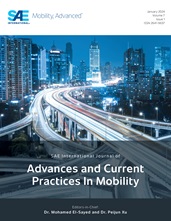The reduction of CO2 emissions is one of the most important challenges for the automotive industry to contribute to address global warming. Reducing friction of internal combustion engines (ICEs) is one effective countermeasure to realize this objective. The improvement of engine oil can contribute to reduce fuel consumption by reducing friction between engine parts.
Electrification of ICE powertrains increases the overall efficiency of powertrains and reduces the average engine oil temperature during vehicle operation, due to intermittent engine operation. An effective way of reducing engine friction is to lower the viscosity of the engine oil in the low to medium temperature range. This can be accomplished while maintaining viscosity at high temperatures by reducing the base oil viscosity and increasing the viscosity modifier (VM) content to raise the viscosity index (so-called “flat viscosity” concept). However, reducing the base oil viscosity increases volatility loss and may cause an increase in oil consumption as a trade-off effect.
ASTM D5800 (NOACK test) has been utilized as an industry standard test since the 1930s to measure the evaporative loss of engine oils related to evaporative oil consumption. However, some reports indicate that standard NOACK does not correlate well with actual engine oil consumption. A new evaporative index with better correlation is necessary for further engine oil technology development.
This study investigated which physical properties of engine oil can express the evaporation rate related to evaporative engine oil consumption in actual engines. As a result, a modified NOACK test at 150°C, which is in the temperature range of the cylinder bore, showed good correlation with evaporative oil consumption in actual engine operation. This modified NOACK test has potential as a new evaporative index to realize new concept oils with flat viscosity properties.
